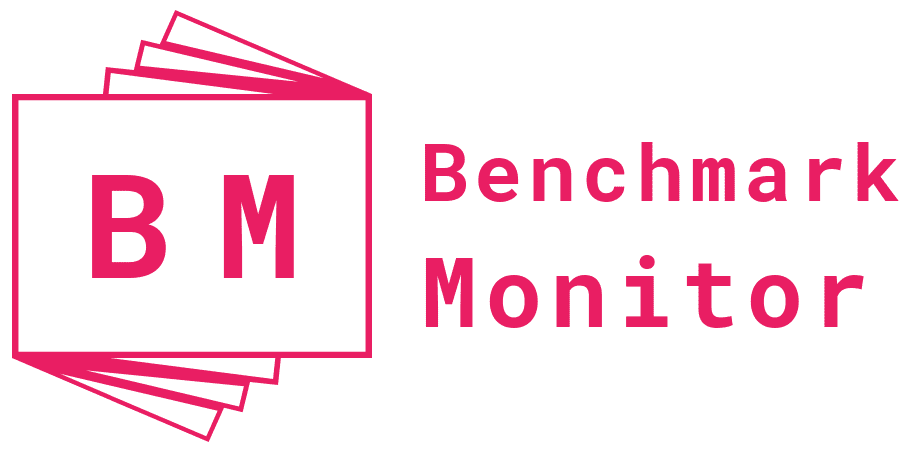By Michael Tobias
Benchmarking is a quality assurance tool that can be used to improve the sustainability of large buildings. By measuring a building’s energy performance over time, and comparing the results with those of similar buildings, we can learn what steps we should take to improve our own building’s performance energy.
The core process involves:
- Deciding exactly what to benchmark
- Understanding the current performance levels of the building
- Developing a benchmarking plan
- Studying the results of other similar benchmarking plans, and/or the results of benchmarking plans that have been applied to similar buildings
- Extracting information from the available data and learning from it
- Utilizing the findings of the benchmarking exercise
But, benchmarking should not be considered to be a once-off exercise. If it is going to be effective it must be part of an ongoing process that aims for continued improvement in line with best practice protocols in the building industry.
This is why a growing number of U.S. cities have made benchmarking and transparency (B&T) policies mandatory. The strategy involves building owners, operators, and/or building managers to report energy and water consumption and to disclose openly just how efficient building performance is.
How to Develop a Benchmarking Plan

The U.S. Department of Energy’s Office of Efficiency & Renewable Energy offers detailed guidance on how to design benchmarking plans. But many building owners simply turn to professionals who offer benchmarking engineering services, especially established heating, ventilation, and air-conditioning (HVAC) and mechanical, electrical, and plumbing (MEP) engineering firms that have experience relating to all areas of sustainability, particularly renewable energy.
The basic guide the Department suggests is intended to provide a framework for internal benchmarking that requires less resources and time than some other types, and involves benchmarking against internal elements.
Although the suggested framework comprises 11 possible stages, not all business owners or managers will implement all of them. However, knowing what they are is helpful.
The first is to establish a goal for benchmarking, so that a suitable strategy can be established. The last is to plan for change based on the results of benchmarking. In cities where B&T is mandatory, reporting is generally required annually at the beginning of April or May, sometimes during May. All cities levy penalties for non-compliance.
The framework outlined by the U.S. Department of Energy provides tips and suggests useful resources for those designing benchmarking plans.
- The first step is to establish a goal for the benchmarking plan. This will determine how the required data, including consumption figures relating to electricity, gas, and water use, will be collected, evaluated, verified, and analyzed. Goals include:
a. Development of a comprehensive energy management system.
b. Establishment of systems that can track and document the results of energy efficiency programs.
c. Development of evaluation, measurement, and verification plans that can be used for building energy-efficiency projects.
d. The ability to participate in energy-efficiency or environmental programs where energy benchmarking is required. There are many of these and they are essential for documenting reductions in greenhouse gases, the way buildings perform in terms of energy efficiency, as well as improvements in these fields.
2. A critical element needed for benchmarking is top management endorsement, or better still, involvement. For this reason, there is a need for “secure buy-in” from buildings owners or top business management. These people need to participate in the benchmarking review process if it is to succeed over time.

3. There is, of course, also the need for a benchmarking team or a person with strong leadership skills to coordinate the process. The roles of team leaders and team members should be clearly defined. Tracking and collections data can demand considerable effort. While communication is a good primary skill for a team leader, others involved will need knowledge of environmental as well as health and safety issues, human resources, operations and maintenance, purchasing, and so on. If the benchmarking process is going to be undertaken in-house, without assistance from experienced benchmarking and transparency engineers, it’s a good idea to involve junior engineers in the process. Sometimes local stakeholders will offer pro-bono (unpaid) assistance because the process is in their interests.
4. Various output metrics will be required to support benchmarking goals and these will need to be determined at the outset. Common requirements specified in energy policies and objectives, as well as targets and action plans should be considered. They include:
a. Gross consumption of total energy use so that energy-use reduction can be tracked. A unit like British thermal units (Btu) is commonly used.
b. Demand, commonly displayed in kilowatts (kW).
c. Energy use intensity (EUI) which provides an environmental or carbon footprint. Buildings are normally measured in Btu per foot although office buildings are often measured in Btu per employee. Hotels are measured in Btu per the number of beds that are occupied.
d. Greenhouse gas emissions based on energy consumption.
e. Energy cost savings based on purchase prices.
5. The output metrics for the program will determine what data input information is needed. All energy sources need to be accounted for along with characteristics and attributes of the building including its location, age, and so on. The Environmental Protection Agency’s (EPA) invaluable Portfolio Manager tool provides examples of data that is required.
6. Having mentioned Portfolio Manager, now is a good time to highlight the need for a good benchmarking tool to track energy for benchmarking. Other tools include spreadsheets and various Internet-based platforms. Portfolio Manager is a free online tool and it is highly recommended for benchmarking. It has incredible functionality and is compatible with the EPA’s ENERGY STAR program.
7. A collection method needs to be determined so that the data can be aggregated and then analyzed. Portfolio Manager can be used to establish centralized and decentralized accounts, depending who and how many people are going to share the accounts.
8. Then a data verification process must be established so that accurate and transparent reporting can be undertaken. Again, Portfolio Manager is an ideal tool for this.
9. Analysis techniques will need to be evaluated so that documentation is clear and meaningful. It will also be necessary to establish an energy performance baseline so the energy consumption and EUI progress can be tracked and benchmarked. Portfolio Manager simplifies this process.
10. Once all this has been done, it is essential to formalize the benchmarking plan and process to be followed. Management, the benchmarking team, and all role-players need to know exactly what the goals are and what their roles are. Deadlines and schedules must also be set.
11. As mentioned above, planning for change is the last step in the framework of an internal benchmarking plan. It is essential to keep track of the process and to establish that relevant metrics are being tracked. Data must be tracked, collected, verified, and analyzed in a timely fashion to be sure it is useful. If building characteristics or its inventory changes substantially, changes may need to be made to the benchmarking plan.
Ultimately, in cities where compliance is required, the first step is to ensure that building energy and water are monitored correctly. Then you need to be sure of compliance with mandatory deadlines for filing.
But this should never be an annoyance, rather, it should be seen as a way to ensure that the energy performance of large (above three story) buildings is constantly improved. This saves money and make certain that buildings are more comfortable and healthy.





